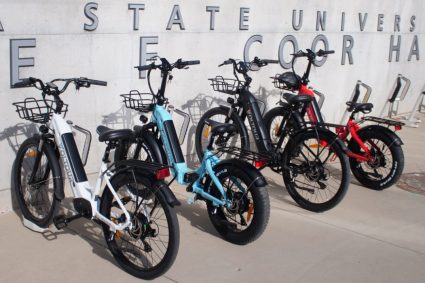

Depending on your age, your dream car may be from the 50s, 70s, 90s, or somewhere in between. It may be a domestic product, something along the lines of a Ford Mustang, Chevy Camaro, or Dodge Challenger, or something more of a European or Asian import. Does the coveted BMW M3, Ferrari Mondial, or original Mazda Miata ring a bell? For the car collectors and car collectors at heart, we know it does. However, with the advances in electric vehicles and the availability of quality classics and parts in decline, the values of these lean machines are in a downward spiral. Is your childhood dream car making the cut?
Chevy El Camino

The Chevy El Camino was a muscle car created by Chevrolet in response to the Ford Ranchero. The El Camino, combining the cab and cargo bed into the body, was fashioned out of Chevy’s station wagon. It was produced between 1959 and 1960, and again from 1964 to 1987. Later models were based on the Chevrolet Chevelle platform, and was available in a variety of different engine and trim options. The El Camino was not a particularly popular car, and was often overshadowed by its competitors. It was also discontinued twice by Chevrolet. As a result, it is not a particularly sought-after collector’s item.
Ford Torino

The Ford Torino was a mid-size car produced by Ford from 1968 to 1976. It was initially sold as a more upscale, smaller variation of the full-size Ford Fairlane. As for the name, Torino was taken from Turin, Italy, considered by many to be “the Italian Detroit.” Although the car was generally well-reviewed in its heyday, the Torino is not considered a modern collector’s car. The biggest issue was that the car was plagued by durability issues, effectively causing low survivability. Depending on its driving environment, the vast majority of Torino’s suffered from heavy body and chassis corrosion in the first five years of ownership. Further, paint peeling was another pain point for this model.
Chevy Camaro Z28

The Chevy Camaro Z28 was originally released in 1966 as a performance option for the Camaro. It was powered by a high-output small-block 302 cu in V8 that was purpose-built for Trans-Am Series racing. Higher-performance transmission, suspension, and brakes were also added to the Z28 nameplate to separate it from the standard Camaro. Although the Z28 is still sought after for its diverse tuning potential, the Z28 is no longer an attractive option for its base 302 cu in V8.
Plymouth Hemi ‘Cuda

The Plymouth Barracuda was a two-door pony car produced by the Plymouth division of the Chrysler Corporation from 1964 to 1974. The Barracuda was introduced one week after the Ford Mustang in April 1964 and, like the Mustang, was based on a compact car platform. The first-generation Barracuda, a fastback A-body coupe based on the Plymouth Valiant, had distinctive wraparound back glass. The first commercially available Hemi variant was released in 1970, during the introduction of the car’s second generation, as the 426 cu in the engine could now fit in the engine bay.
Lincoln Continental

When the Lincoln Continental was first introduced in 1939, it quickly became one of the most popular cars on the market. Its sleek design, powerful engine, and luxurious features made it a favorite among both celebrities and everyday drivers. As a fun fact, the 1948 model was the last car model sold by an American manufacturer that offered a V12 engine. While the first-generation Continental is still praised, other model years, specifically those from 1959-1961, are more highly sought. This is due to a more prized design and fewer numbers of cars being produced during these years.
BMW M3 1990

The original BMW M3 (E30) was introduced in 1986 and was produced until 1991. It was the first M3 model and was succeeded by the E36 M3. The E30 M3 was incredibly popular, due to its incredible performance, handling, and style. It is still considered one of the best performance cars ever made and is highly sought after by tuners looking to maximize performance in this sporty coupe. Amazingly, even its high-revving S14 four-cylinder engine could push this car to 146 mph, before any modifications.
Dodge Charger

The Dodge Charger was a muscle car that was produced from 1966 to 1978. It was based on the Chrysler B platform, and was available as a two-door coupe and a four-door sedan. The Charger was one of the most popular muscle cars of its time, due to its powerful engines and aggressive styling. It was also available with a variety of performance-oriented options, such as a four-speed manual transmission and a V8 engine. The first-generation Charger was discontinued in 1978 but was revived in 2006 as a high-performance sedan. The first Charger is still commendable but will take some major $$$ to achieve some respectable drag-race numbers.
Ferrari Mondial

Ferrari’s Mondial was one of the company’s most popular cars, thanks to its combination of power, luxury, and style. The Mondial was introduced in 1980, and was based on the company’s 308 GT4. The car featured a V8 engine that produced between 215 and 300 hp and could reach a top speed of 150 mph. The Mondial was also well-equipped, with features like power windows, air conditioning, and a leather interior. The car was produced until 1993, and over the course of its production, more than 6,000 examples were sold.
Ford Bronco

The first Ford Bronco was developed as a compact off-road/sport utility vehicle. It became one of the most popular SUVs on the market when it was first released in 1966, competing against the Jeep CJ-5 and International Harvester Scout. It was known for its rugged design and off-road capabilities, which made it a favorite among outdoor enthusiasts and those who loved to explore the great outdoors. The Bronco was also popular for its affordability, simplistic design language, and many customization options.
Toyota Supra

The 1978 Toyota Supra was based on the Celica liftback but was elongated to allow for the inclusion of Toyota’s Inline-six over the four-cylinder. It was developed to compete against Datsun’s Z-Car. Nevertheless, the Supra was so popular because it was an incredibly well-rounded sports car. It had a 110 or 123 hp engine, great handling, and a stylish design that made it stand out from the crowd. It was also relatively affordable, which made it a great option for budget-minded enthusiasts. The Supra quickly gained a reputation as a giant killer on the track, thanks to its ability to take on much more expensive cars and come out on top. This made it a favorite among amateur and professional racers alike and helped solidify its place as one of the all-time greats.
Chevy Bel Air

The Chevy Bel Air was introduced in 1949 and quickly became one of the most popular cars on the market. Its stylish design and comfortable ride made it a hit with consumers, and its affordable price made it a hit with families. The Bel Air was also one of the first cars to offer a V8 engine, which made it a favorite among drivers who wanted more power. The Bel Air, for several memorable reasons, essentially became “an icon of its age. . .right alongside Elvis, Marilyn Monroe, and Leave it to Beaver.”
Jaguar XKE

The first Jaguar XKE was released in 1961 and was an instant hit. It was popular for its sleek design, powerful engine, and excellent handling. It was also one of the first cars to feature independent suspension all around, making it a great performer on the road. The XKE was produced until 1974 when it was replaced by the XJ6. Despite its success, the XKE was not without its problems. The independent suspension made the car prone to wheel hop, which could lead to loss of control. Additionally, the engine was notoriously unreliable and often required frequent repairs. However, these issues did not stop the XKE from becoming one of the most popular cars of its time.
Corvette C-3

The C-3 Corvette was introduced in 1968 and was in production until 1982. It was the third generation of the Corvette and was the first to be built with a fiberglass body. Speaking of, its body was known as the “Coke bottle” design due to its angled front-end, rising front fenders, slim mid-body, and large rear fenders. The C-3 was very popular with buyers, despite both praise and criticism, as it offered a combination of style, performance, and comfort. The fiberglass body made the car lighter and more aerodynamic, while the three or four-speed automatic transmission made it more user-friendly.
Ford Maverick

The original Ford Maverick (not to be confused with Ford’s 2021 hybrid pickup truck) was introduced in 1970 and quickly became one of the most popular cars on the market. By the end of its production in 1977, over 2.1 million units were produced. The Maverick was immensely popular due to its smaller size, respectable gas mileage, affordable price, and dependable performance. Albeit, as often as it was often seen as an economical car, the Maverick was also offered with a 250 cu in inline-six or 302 cu in inline-eight that transformed this compact into a daring street racer.
Mini Cooper

The Mini is a small car that was made by the British Motor Corporation (BMC) and its successors from 1959 until 2000. The original is considered an icon of the 1960s, and its space-saving front-wheel-drive layout influenced a generation of car-makers. The design allowed for passengers or luggage to use 80% of the car’s floor pan. The vehicle is in some ways considered the British equivalent to the Volkswagen Beetle, which enjoyed similar popularity in North America. Either way, the Mini was named the second-most-influential car of the 20th century, right behind the Ford Model-T, by the Global Automotive Elections Foundation.
Mazda Miata

The Mazda Miata was originally released in 1989 and quickly became one of the most popular cars on the market. The front mid-engine, rear-wheel-drive layout sports roadster was deeply admired for its affordable price, lightweight yet non-complex design, and technologically modern performance characteristics. Mazda used the 1960s/70s Lotus Elan as their design understudy. Although the Miata is still praised and valued, over one million units have been sold. It is the world’s best-selling two-seat convertible sports car in history, after all.
VW Beetle

The original VW Beetle was first introduced in 1938 and was immediately popular for its unique design. The Beetle was designed to be an affordable car that was easy to maintain and repair, and its simple design made it a hit with consumers. Awkwardly, the concept of the Beetle comes from the mind of past leader of Nazi, Germany, Adolf Hitler. During his rule, we wanted a cheap, mass-produced car that would occupy Germany’s new road network.
Ford Mustang

The Ford Mustang was first manufactured in 1964. The car, named after the head designer’s love of the P-51 Mustang, a WWII fighter/bomber, was designed to be an affordable, highly-styled yet performance-oriented compact car. In fact, Ford’s Mustang is credited with creating the “pony” class of cars. It took years for GM and Chrysler to respond; the Chevy Camaro and Pontiac Firebird both arrived in 1967 while the Dodge Challenger took another three years, arriving in 1970. However, by then, the Mustang was the decade’s undisputed pony car leader.
Toyota LC 70

The LC (Land Cruiser) 70 series was a range of workhorse four-wheel drive SUVs produced by Toyota from 1984 to 1990. The series, acting as the successor to the respected J40 series, was notable for its off-road capabilities and rugged design and was popular with buyers who wanted a vehicle that could handle rough terrain. The LC has long been recognized for its extremely durable and reliable engines and the thick sheet metal used to absorb all of Mother Nature’s punches.
Datsun 200 SX

The Nissan Silvia, better known by its North American export name, the Datsun 200 SX, was a sporty, stylish coupe that was produced by the Japanese automaker from 1965 until 1968 and then again from 1975 until 2002. The 200 SX was positioned as a more affordable alternative to other sports cars on the market, and it quickly gained a reputation for being a great value. The car was also known to be a tuner’s dream but it was also revered for being undeniably reliable.
Ford Fairmont

The Ford Fairmont was a two-door coupe, four-door sedan, or station wagon that was produced by Ford from 1978 to 1984. It was the company’s third-generation compact car meant for the North American market. The Fairmont was a replacement for the Maverick and the company’s first car with a design not based on the Ford Falcon. Despite its limited production run, a 1978 Ford Fairmont Futura coupe became Ford Motor Company’s 100 millionth vehicle produced. In 1984, the Fairmont was replaced by the front-wheel drive Ford Tempo.
Dodge Magnum

The original Dodge Magnum was a muscle car produced by the Dodge division of Chrysler Corporation from 1978 to 1988. It was based on the Chrysler B platform, which was also used for the Chrysler Cordoba. The Magnum was available as a two-door coupe. It was powered by a 5.2, 5.9, and 6.6L V8 engine and was available with a three-speed automatic transmission. After its one year of production in 1978, the Magnum name was revived in 2004.
Lamborghini Urraco

The Lamborghini Urraco is a classic Italian sports coupe that was first introduced in the 1970s. The Urraco, which translates to “little bull” in Italian, was developed as a more affordable/competitive alternative to the Ferrari Dino and Maserati Merak. The 2+2 coupe, with its sleek angled body, was designed by Marcello Gandini, the designer also behind the Miura, Countach, and Diablo. Less than 800 models were built. The Urraco was eventually succeeded by the Lamborghini Silhouette P300 in 1976.
Toyota Trueno

The Trueno, also known as the Sprinter in some markets, is a sports car that was produced by Toyota from 1968 to 2004. The car was introduced as a two-door coupe, and later a three-door hatchback version, powered by a variety of four-cylinder engines. The Trueno was popular among enthusiasts for its simple design and performance capabilities. The car was also used extensively in motorsport and was successful in both rallying and circuit racing.
Mazda RX-7

The Mazda RX-7 is a front-engine, rear-wheel-drive sports car that was produced by Mazda from 1978 to 2002. The RX-7 was a popular car in its day, and was known for its unique engine design; that engine being the Wankel rotary engine. Interestingly, for being less heavy, producing fewer vibrations, and more uniform torque, the Wankel engine never made it midstream. Although Mazda has hinted at RX-7 revivals in recent years, nothing has come to fruition thus far.
BMW 5 Series

Moving on to more general car models, we see that one of the best known luxury models actually has one of the steepest falls in value. According to a 2018 study, BMW 5 Series vehicles lose a staggering 52.6 percent of their value after just three years. Quite surprising given the overall reputation of BMWs, but on the other hand it makes purchasing a used one comparatively affordable.
Mercedes-Benz E-Class

Mercedes-Benz E-Class vehicles are still thought of as some of the most exclusive, luxurious vehicles on the market. So why do they lose over half of their value in just three years? To put it simply, many new models are leased for three years, so there’s often a glut of used E-Class vehicles hitting market every three years. After 5 years, one of the vehicles can be down over $35,000.
Volkswagon Passat

As explained by an automotive publication, “The Passat underwent a significant redesign in 2016, its first overhaul since it was introduced to the American market in 2011, to include upgrades in its safety features and infotainment technology.” in layman’s terms, that means that Volkswagen almost completely redesigned the car, meaning that that older models immediately fell in value on the used car market.
BMW Series 3

Like its 5 Series brand counterpart, BMW’s Series 3 vehicles also depreciate in value very quickly. This once again comes down to lease lengths. Many lease their vehicles on three year intervals, which in turn means that they turn over their vehicles every years, which then leads to a ton of three-year-old models hitting the market every three years.
Nissan Leaf

The Nissan Leaf was released to tremendous fanfare in 2010 as the first mass market electric and zero emission vehicle. The car won 2010 Green Car Vision Award, the 2011 European Car of the Year, the 2011 World Car of the Year, and the 2011–2012 Car of the Year Japan. However, issues with the vehicle line’s performance diminished interest, and in-turn resale value prominently.
Chevrolet Imapala

The Chevrolet Impala is another vehicle that fell victim to the curse of a major vehicle redesign. Once the whole design of the Impala was changed in 2014, the secondary market prices for previous generations of the vehicle crashed significantly. Which is bad news for those trying to sell, and good news for those looking for a pre-2014 Impala.
Hyundai Genesis

The Hyundai Genesis sees one of the quickest large falls on our list. The luxury vehicle loses over 1/3 of its value just 12 months – that’s only a year! – after purchase. However, there is a slight positive here for those looking to unload their vehicles. They may not sell for as much as they were purchased for, but they do tend to sell quickly.
GMC Yukon

Occasionally, outside forces can have just as big an impact on secondary market car prices as a redesign or other in-industry happenings. For example, large gas-guzzling SUVs such as the GMC Yukon often see their secondary market prices bottom out when gas prices hit high levels, and tend to balance out once gas prices return to their relatively “normal” levels.
Kia Cadenza

Kia first introduced the first generation of the Cadenza in 2010, and the vehicle have gone through a few models since. However, the Cadenza seems to have trouble holding its value on the secondary market. Mainly, this can be attributed to the fact that the model isn’t well-established, leading to a lack of knowledge about the model.
Chevrolet Volt

The Chevrolet Volt was one of the earliest mass market electric cars, and that may have affected its after-market value. Namely, the high cost of replacing the vehicle’s EV battery, combined with other potential patience issues, leads to s staggering 70% drop in resale value for the Volt.
BMW 6 Series

Hey look, another BMW entry, and we’ll give you one guess as to why. Yup, the BMW 6 Series is here, mainly because the three year lease cycle once again means there’s a flood of three-year-old models constantly on the market. The 6 seems to be hit particularly hard, seeing its resale value fall a whopping 68% over five years.
Jaguar XJL

The Jaguar XJL is another luxury vehicle that sees a massive decline in secondary market resale value. Once again, the nature of lease legates and typical luxury car buyers leads to a drop of nearly 2/3 of the arms value over three years. Talk about taking the plunge.
Toyota Prius

The resale value of the Toyota Prius falls victim to the constant advancements being made in electric car charging and fuel efficiency technology. Prius and Prius C models see a depreciation of 50% over a five year period, mainly because their technology becomes out of date relatively quickly.
Ford Fusion Energi

The Ford Fusion Energi runs into two issues we’ve discussed. First off, it’s an electric hybrid vehicle that falls victim to its technology becoming quickly outdated. Secondly, the model is not recognizable to the majority of car-buyers. this combination leads to the vehicle losing nearly 70% of its value on the secondary market.
Audi S4, S5, S6, S7

There are several Audi vehicles – the Audi S4, S5, S6, and S7 – that often see large depreciation in value. This due to the brand’s well-known issues – Consumer Reports once said “Audis are a sinkhole of service problems” – which leads to high maintenance costs and in-turn m makes them unappealing to used car buyers.
Kia K900

The Kia K900 received a massive promotional push – including ads featuring LeBron James – when it launched, as it was the company’s first attempt at a high-end sedan. However, all that hype didn’t translate well to sales, as the vehicle’s secondary market prices tend to crater to about half than its initial sticker price.
Nissan Maxima

ISeeCars.com discussed the 34% drop Nissan Maxima’s see on the secondary market, writing, “The 2014 Maxima was the last model of its generation, and the redesign had been delayed a full model year. As a result, the 2014 model lagged beyond the competition in terms of technology and styling, decreasing consumer interest.”
Chrysler 300

The Chrysler 300 is another luxury vehicle that sees a massive drop over a quick span – a whopping 32% (or over $13,000) in just a year of ownership, making it a relative steal for those looking to pick up a luxury vehicle on the secondary market.















